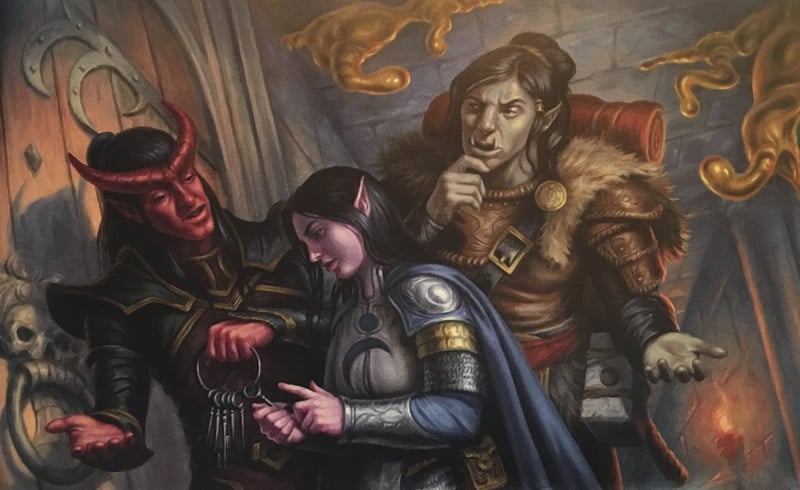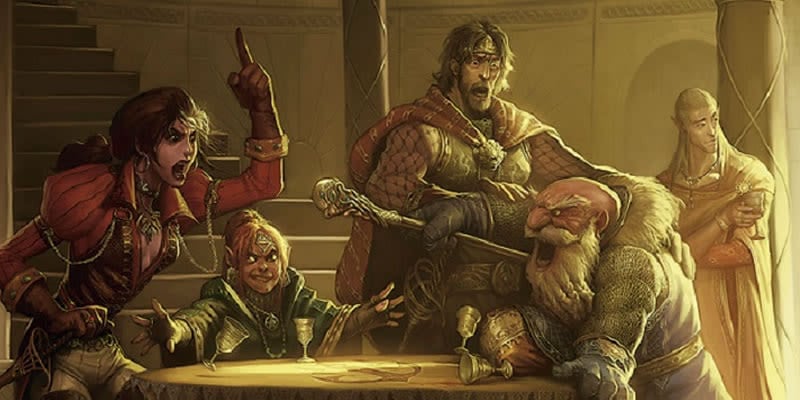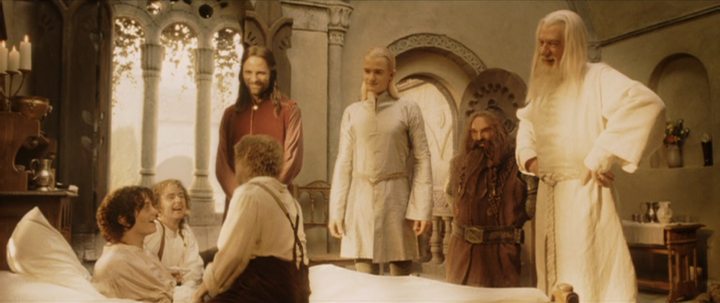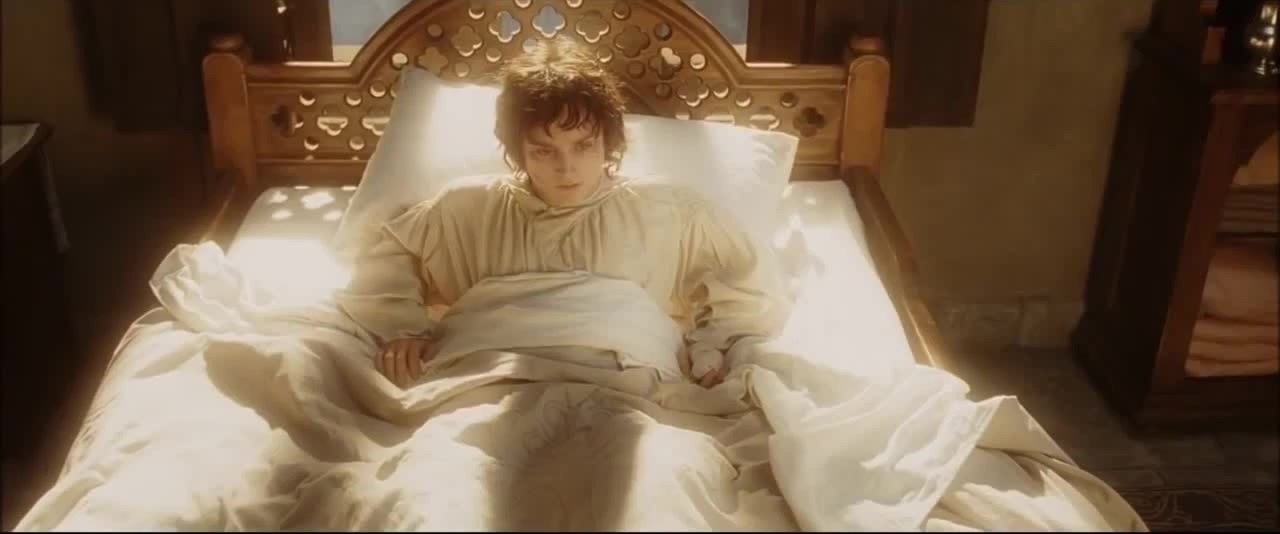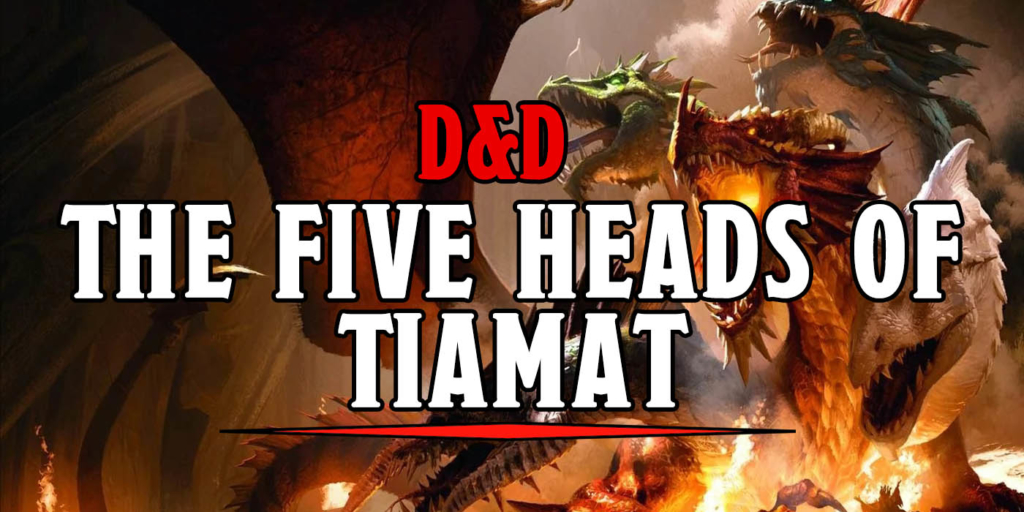D&D: Want To Crank Up The Tension? Use Rests Sparingly
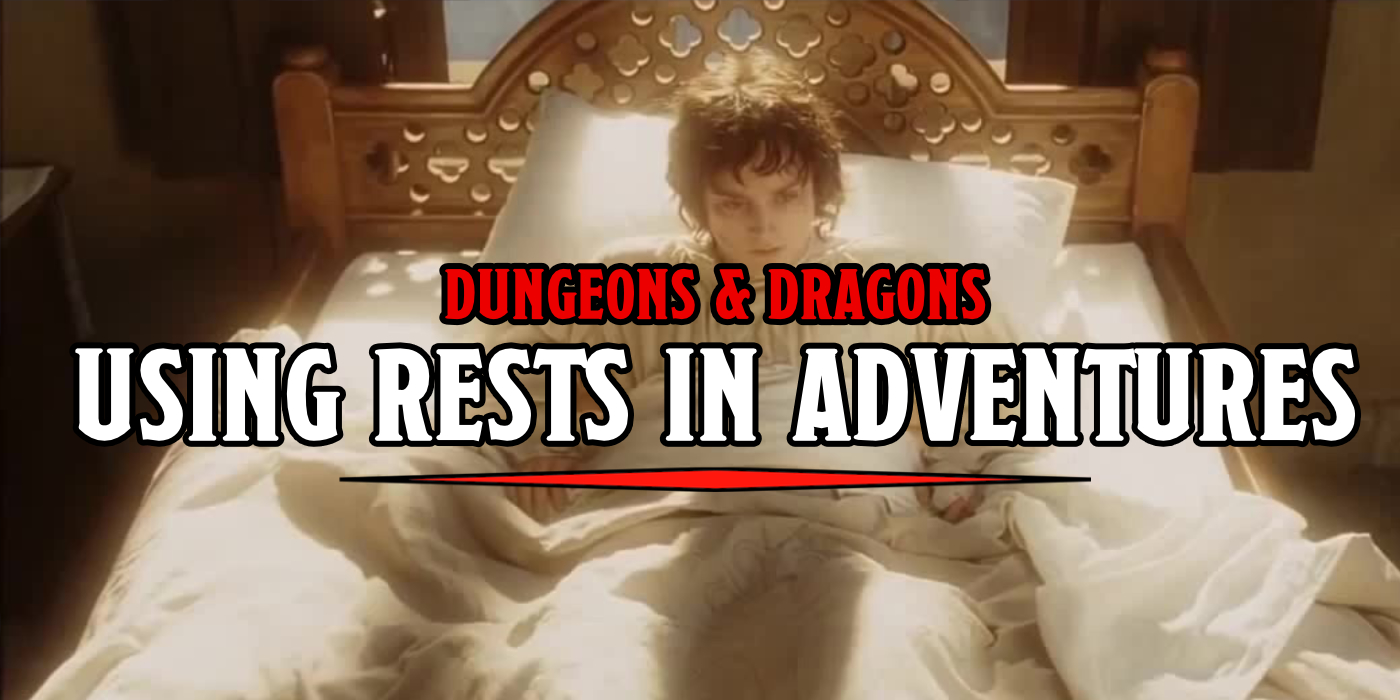
The real power fantasy of D&D is that you can reliably get a good night’s rest, and wake up feeling refreshed the next day. Here’s how to play in to that.
When it comes to adventuring, there’s nothing quite like being well-rested to get the job done. If you were playing a video game designed in the last two decades, I can all but guarantee a rest mechanic was in play at some point. Same goes for bonuses from eating food–MMOs might have popularized the idea of “rest XP” but even in D&D, a good night’s sleep and a full meal are all a group of adventurers need before they are ready to take on gods and monsters. In 5th edition, even an hour’s rest and relaxation can take a group of spent, wounded adventurers, and transform them into a fighting force ready to take on whatever final boss you hope will last more than one round of combat this time. I’m talking, of course, about Rests in Dungeons and Dragons.
Rests are an important part of any adventure–but they’re one of the hardest to plan for. Will your characters be rested and at their full hp/use of short rest abilities? Almost certainly yes. To hear the internet talk about it, rests in D&D are a problem because they mean characters are always topped off, which can trivialize encounters that aren’t the deadliest things in the world. But they’re a problem because if you have too few encounters in a day (which your characters are topped off for), then characters who get their abilities back on a Short Rest are somehow short changed, because they only have one chance to go nova instead of multiple.
And even then if you have too many encounters, people with long rest powers start to feel outclassed if the short rest people are always rested and refreshed. Heaven help you if you’re a DM who just wants players to appreciate their powers by having them run into an encounter without being able to go nova in round one, making the rest of the encounter trivial.
What to do? Well, when it comes down to it, rests are all about pacing and tension. Without a rest, a potentially easy encounter can become more challenging, and if the players know they’re running low on steam, fighting for a rest can be reward enough. But that means you have to know why you’re resting, or, if you’re the DM, why you’d want to stop the players from resting. There are a number of reasons to do this.
First off, there’s the narrative of it. It might interrupt the flow for the evil necromancer to be in the middle of kidnapping bones from the town graveyard, when the players decide to stop and rest after fighting his bonemen and zomboids before taking on the main event. You can use the mechanics of a rest to imply the mounting tension leading into a chase. Without a rest, encounters seem to feel more seamless. If you want to make players really feel a ticking clock, having them decide between “stopping to take a rest” or “catching the assassin” suddenly takes on a slightly more dangerous edge. Facing down that assassin without being at your best–especially if the players have had to fight some of her minions, or had to deal with non-monster encounters along the way–can give you that tension that makes an encounter memorable.
This is how you get those skin-of-your-teeth moments. Of course, your players could always decide to stop and rest–but then that too is a chance for you to move the lever you had applying pressure on them. The assassin gets away, able to plot another day, or worse–carries out their mission. The tricky thing here is not to make the players feel punished for resting, rather just to make them feel like their actions have consequence, and the world they live in is a consistent one. If you want to really make the players feel it–don’t let them know how much time they have. Just that they have “a time limit.”
The Tomb of Annihilation does this incredibly well. In it, the entire world is suffering from a Death Curse that renders the dead unable to be brought back to life, while those that had been raised from the dead in the past begin to wither and fade under the effects of the curse. There’s a mechanical backing to this template; characters that have been resurrected lose 1hp from their HP maximum per day. And if you play the game straight out of the book, the players are hired by a retired adventurer who is now afflicted–she has 79 days to live. Which makes each long rest that much more precious. If players stop and rest once too often, they won’t have enough time to actually solve the problem before their patron is dead.
You can do the same thing with a magical artifact in a village that needs to be restored, or there’s some ritual that will happen when the stars are in alignment, but the players have to find the cultists carrying it out first–if you want to apply tension, rests can be a good way to do it.
But sometimes you want players to feel how much they’ve been fighting. This is a different kind of pacing, but a much more mechanically driven one. Both are valid, and a good DM will find different reasons to vary up the pace of an adventure, but here we’re talking about wanting to hammer home how difficult something is. Maybe the fights aren’t challenging enough–but something as simple as not being at your best when encountering a fight can be just the thing to make players get creative and start using all the random weird one-shot magic items you’re giving them.
Otherwise they’ll hoard them. But if you want people to use those necklaces of fireball or potions or whatever, you’ve got to put pressure on them to do so. It’s the same principle behind building an encounter in waves. You want players to feel like things are shifting dynamically, like the world is reacting to their presence in it. And like the game is acknowledging their power–and their threat. So if players are fighting a band of goblins, you might up their difficulty by throwing small skirmishes at them. A few goblins popping in and firing off shortbows before retreating into tunnels–or scouts that follow them and ambush them before they can get a full hour’s rest in can make players that much more appreciative of a good night’s sleep. And it helps you set up encounters that are a little more difficult without necessarily overpowering the party.
In that case, rest feels like a reward. Frequently in the final conflicts in stories, the heroes are almost never at their best–they might start fresh as a daisy in shining armor, but by the end, they’re barely hanging on. This is one way to get that feeling across.
One last real interesting thing you can do–only let some of the party get a rest in. This works especially well during a lot of roleplaying-centric encounters. Maybe the party is resting at an inn, but before the full hour can go past, the Warlock and the Sorcerer are beset with an arcane vision that keeps them from resting peacefully, or the Fighter is summoned to the Queen’s throne, while the Bard is being pressed to perform. Having a party in various stages of rest can make encounters feel that much more dynamic.
And of course the deeper into it you get, the more you’ll find you can use to leverage them. For extra grueling difficulty, don’t let the party rest for at least a day and give them a long march or some other thing that subjects them to more than one level of exhaustion. Even a long rest only removes one level of exhaustion, so you’d still be fatigued after sleeping–again it all depends on what you want to do.
But the point is, as long as you think of why you’re resting (or not) you can come up with some neat moments that will help you build a better game.
Until next time though, Happy Adventuring!


